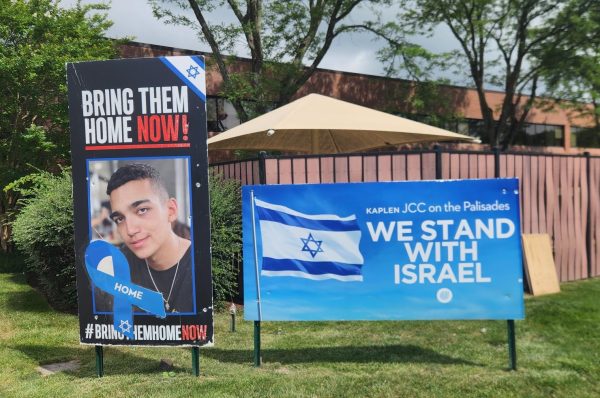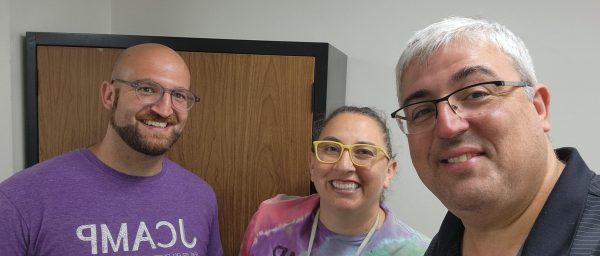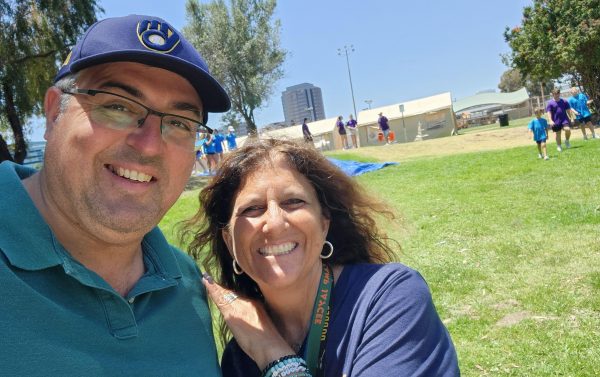by Uria Roth
This past summer, I crisscrossed the U.S. and Canada, visiting more than a dozen JCC Camps—and JCCs—that received funding for Israel-related programming as part of JCC Association of North America’s Mit-habrim | Connections initiative. I saw day camps and overnight camps. I met educators, counselors, camp directors, and staff members. And at every stop, I realized just how many people need to work together to make “it” happen.
Of course, there are always challenges when it comes to Israel education, but this year they were greater than ever: How do we talk about Israel at camp? On what issues do we choose to focus? How do we combine education that both reflects everyday life in Israel and celebrates the best the country has to offer its citizens and the world?
My colleagues and I, staff members of JCC Association’s Center for Israel Engagement, devised a creative solution to answer all these questions and more. For starters, we tweaked the Mithabrim application deadline and project requirements, making them flexible enough to accommodate JCC Camps’ schedules. Then, instead of talking about Israel, we made sure North American campers and staff would have opportunities to talk to Israelis. For that to happen, though, Israelis—shlichim (emissaries), counselors, campers, educators, and others—would have to come to camp.
This year, that necessity created yet another challenge.
The war between Israel and Iran began on June 13, immediately interfering with the travel plans of Israelis bound for JCC Camps. Some literally were headed to Ben Gurion Airport, and others were scheduled to fly the next day. Across the ocean, camp staff had to address not only the war but also arrival delays of their Israeli counterparts. Although some Israelis embarked on a 48-hour journey to camp, others waited to travel until the end of the war on June 24.
Even once the Israelis had arrived safely at camp, the task remained, first and foremost, to create opportunities for conversations among Israelis and North Americans about the events of the last two years in Israel.
Here’s how they rolled out in a few of the places I visited.
In Tenafly, New Jersey, at the Kaplen JCC’s “start-up nation” day camp, part of Neil Klatskin Summer Camps, the experiences of Americans and Israelis blended to create a special environment. Notably, the discussions happened in Hebrew, the only language spoken at camp.

At JCamp, part of J Los Angeles, three Israeli instructors came to the West Coast as part of Big Idea, a tech-focused program that provides hands-on technology experiences through various projects. During their time in the U.S., they spoke about Israeli entrepreneurship and contributed to creating a unique summer experience that provided a traditional camp atmosphere and included innovative STEM initiatives. Campers could choose from hands-on workshops, including robotics, 3D modeling, coding, gaming, and photography, and also participate in “unplugged” activities such as swimming, sports, and Israeli dancing.

In San Diego, three types of Israel guides, each with their own perspectives, enriched the Jaycee summer camp experience for kids at the Lawrence Family JCC. Shinshinim, or cultural emissaries, are completing a year of community service in between high school and their military service. Shlichim, or emissaries, have finished their required military service and bring personal stories and experiences to their work at camp. Lastly, some guides previously emigrated from Israel to San Diego and bring a wholly different outlook to camp.

In each locale, the Israeli content is both different and similar but always authentic, offering a sense of “togetherness” that embodies the concept of Jewish peoplehood. At these JCC Camps and others, Mit-habrim funding enabled staff to bring Israel to life in realistic, exciting, and deeply educational ways. Using theater, music, cooking, storytelling, and technology, the staff created true moments of connection in which campers explored Israel not only as a place but as part of their own Jewish story.
Seeing firsthand the creativity, intentionality, and heart that went into building and implementing each program brought renewed meaning to the work the JCC Movement does in Jewish and Israel education. These experiences reminded me that even in our fraught and often divided world, our camps continue to serve as places of joy, belonging, and connection, where young people can safely explore their Jewish identities, ask hard questions, and build lasting memories.
What I witnessed while visiting these camps was truly inspiring and gave me hope. It reinforced the importance of investing in Israel education and reminded me of the powerful role JCC Camps play in shaping the next generation. Mit-habrim is more than a funding initiative—it’s a bridge that connects young Jews directly to Israel, Israelis, and a sense of purpose and pride.
Uria Roth is the project director for Mit-habrim, an initiative of JCC Association’s Center for Israel Engagement, the Israel arm of JCC Association of North America.
Reader Interactions